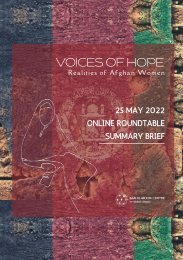Europe and North America Regional GCED Network
The report “Europe and North America Regional GCED Network” is based on a research project funded by Asia-Pacific Centre of Education for International Understanding (APCEIU) and Ban Ki-moon Centre for Global Citizens (BKMC) led by Lynette Shultz (Centre for Global Citizenship Education and Research, University of Alberta) and Massimiliano Tarozzi (International Research Centre on Global Citizenship Education, University of Bologna) as Principal Investigators. The research team was composed of Carrie Karsgaard and Carla Inguaggiato, with the support of Kester Muller and Francis Owusu.
The report “Europe and North America Regional GCED Network” is based on a research project funded by Asia-Pacific Centre of Education for International Understanding (APCEIU) and Ban Ki-moon Centre for Global Citizens (BKMC) led by Lynette Shultz (Centre for Global Citizenship Education and Research, University of Alberta) and Massimiliano Tarozzi (International Research Centre on Global Citizenship Education, University of Bologna) as Principal Investigators. The research team was composed of Carrie Karsgaard and Carla Inguaggiato, with the support of Kester Muller and Francis Owusu.
Create successful ePaper yourself
Turn your PDF publications into a flip-book with our unique Google optimized e-Paper software.
several closed sub-groups, referred to as cliques, information is easily shared<br />
within the cliques. However, broker intermediation is needed between cliques.<br />
This implies that the nodes occupying the brokering position have a lot of<br />
power, as they could use their network positions to their own advantage.<br />
These networks, however, do not st<strong>and</strong> out for their level clustering <strong>and</strong><br />
triangulation in cliques, as revealed by the measures presented so far. It is also<br />
difficult to separate the network into homogenous groups based on attributes or<br />
triangulation patterns. Therefore, our interpretation is that we can classify these<br />
networks as core-periphery (Borgatti & Everett, 2000). The main characteristic<br />
of core-periphery is to have a densely connected group of actors at the centre<br />
of the network, called the "core," <strong>and</strong> a loosely connected group of actors that<br />
are in the least central position of the network, called the "periphery."<br />
In Table 15, we present the core-periphery model results for the three networks<br />
based on the core-periphery algorithm (Borgatti & Everett, 1999) present<br />
in the software UCINET 1 . Table 15 shows that the metrics of the studied<br />
networks matches how core-periphery typically functions. First, the number of<br />
organizations in the core is smaller than in the periphery. Second, the density,<br />
which is a function of the number of ties, is smaller in the periphery. Finally, the<br />
meeting network is less close to the core-periphery model as it has a smaller<br />
fit. This is consistent with the results presented in Table 13, where the meeting<br />
network has an overall density too small to fit with a core-periphery model.<br />
Table 15 : Core-periphery model results<br />
<strong>Network</strong><br />
Core/<br />
Periphery fit<br />
(correlation)<br />
#<br />
organizations<br />
core vs<br />
periphery<br />
#<br />
ties core vs<br />
periphery<br />
Density core<br />
vs<br />
periphery<br />
Information 0.5275 23 33 237 40 0.468 0.038<br />
meeting 0.4417 14 42 64 34 0.352 0.020<br />
cooperation 0.5256 13 43 92 78 0.590 0.043<br />
This core-periphery model allows us to investigate further the function of the<br />
<strong>GCED</strong> network. It is therefore important to identify the characteristics of the<br />
organizations in the core <strong>and</strong> periphery. This is crucial, as the organizations<br />
that are at the core of the network generally benefit from the dense flow of<br />
information exchange, collaboration, <strong>and</strong> meetings.<br />
Comparing the composition of core-periphery groups in regard to resources,<br />
areas <strong>and</strong> typology of organizations did not show significant patterns. The<br />
element that proved to be significant is the level of action of the organization.<br />
1<br />
NETWORK > CORE/PERIPHERY > CATEGORICAL(Borgatti, S.P., Everett, M.G. <strong>and</strong> Freeman, L.C. 2002)<br />
050ㆍ051


















